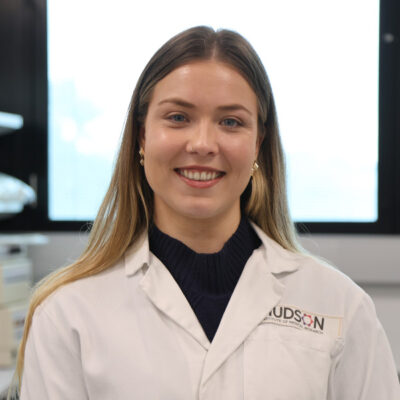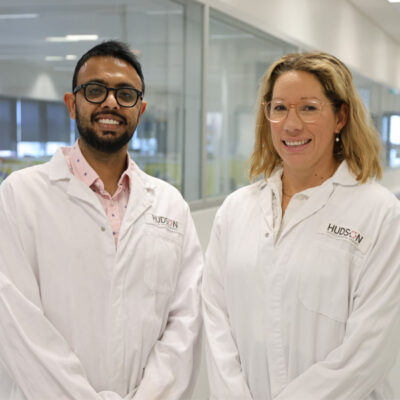‘Missing link’ explains how viruses trigger immunity
By Hudson Institute communications
A discovery by Melbourne researchers has solved a longstanding mystery of how viruses trigger protective immunity within our body.

The research team demonstrated a protein called SIDT2 was crucial for cells to detect viral components in their environment, and initiate an immune response to reduce the virus’ spread.
As well as being an important part of the intricate ‘arms race’ between viruses and our immune system, the finding could inform better approaches to delivering a promising new class of therapeutics.
The study was led by Dr Tan Nguyen, Dr Ken Pang, Associate Professor Seth Masters and Professor Ian Wicks at the Walter and Eliza Hall Institute, together with Dr Michelle Tate at the Hudson Institute of Medical Research, and Professor Craig Hunter at Harvard School, US. The research was published today in the journal Immunity.
During a viral infection, RNA – a genetic material similar to DNA – is released into the environment around the infected cells. Dr Nguyen said the team showed that SIDT2 allowed viral RNA to be shuttled between compartments within cells, allowing it to reach the proteins that trigger anti-viral immunity.
“This RNA is in a ‘double-stranded’ form, called ‘dsRNA’, that is not normally found in our body. Human cells have evolved ways to detect dsRNA as a warning sign of an active viral infection and, in this way, dsRNA acts as an important trigger for cells to mount an anti-viral immune response.
“Cells constantly survey their environment by ‘swallowing’ small samples of their environment into compartments called endosomes. The enigma was that no one knew how the dsRNA escaped the endosome to reach the cytoplasm, where it can be detected by the cell.” Dr Nguyen said.
The team showed that SIDT2 was the crucial missing link needed to transport dsRNA out of endosomes, and enable an immune response to be launched.
Viruses have many strategies to prevent an infected cell from alerting the immune system to their presence, Dr Pang said. “Intriguingly, we showed that SIDT2 is critical for uninfected ‘bystander’ cells to detect viral RNA in their environment,” Dr Pang said. “This means bystanders can trigger protective immunity before they even encounter the virus itself.
“Viruses have evolved many ways to switch off the immune response, allowing them to spread, while humans have evolved counter measures to allow a rapid and protective immune response that contains the viral infection. SIDT2 is helping humans in the ‘arms race’ between viruses and their human hosts.”
The research may also have future implications for a new class of therapeutics based on dsRNA.
“For more than a decade there have been attempts to use modified dsRNA to switch off genes that cause disease – an approach called RNA interference,” Dr Pang said.
“While there have been many clinical trials utilising RNA interference, delivering RNA into cells has been a huge challenge and the lack of effective delivery has meant that these trials have all ultimately failed.
“Now that we know SIDT2 is important in trafficking double-stranded RNA into cells, future RNA-based therapeutics can hopefully be designed to maximise their transport by SIDT2,” Dr Pang said.
Dr Nguyen undertook the research as a PhD student at the Institute enrolled through the University of Melbourne. Dr Pang now works at the Murdoch Children’s Research Institute.
The research was supported by the Australian National Health and Medical Research Council, the Royal Australasian College of Physicians, the Menzies Foundation, the CASS Foundation, the John T Reid Charitable Trusts, Sylvia & Charles Viertel Senior Medical Research Fellowship, the US National Institutes of Health and the Victorian Government Operational Infrastructure Support Program.
This story was originally published on the Walter and Eliza Hall Institute website.
Contact us
Hudson Institute Communications
t: + 61 3 8572 2697
e: communications@hudson.org.au
About Hudson Institute
Hudson Institute’ s research programs deliver in three areas of medical need – inflammation, cancer, women’s and newborn health. More
Hudson News
Get the inside view on discoveries and patient stories
“Thank you Hudson Institute researchers. Your work brings such hope to all women with ovarian cancer knowing that potentially women in the future won't have to go through what we have!”




